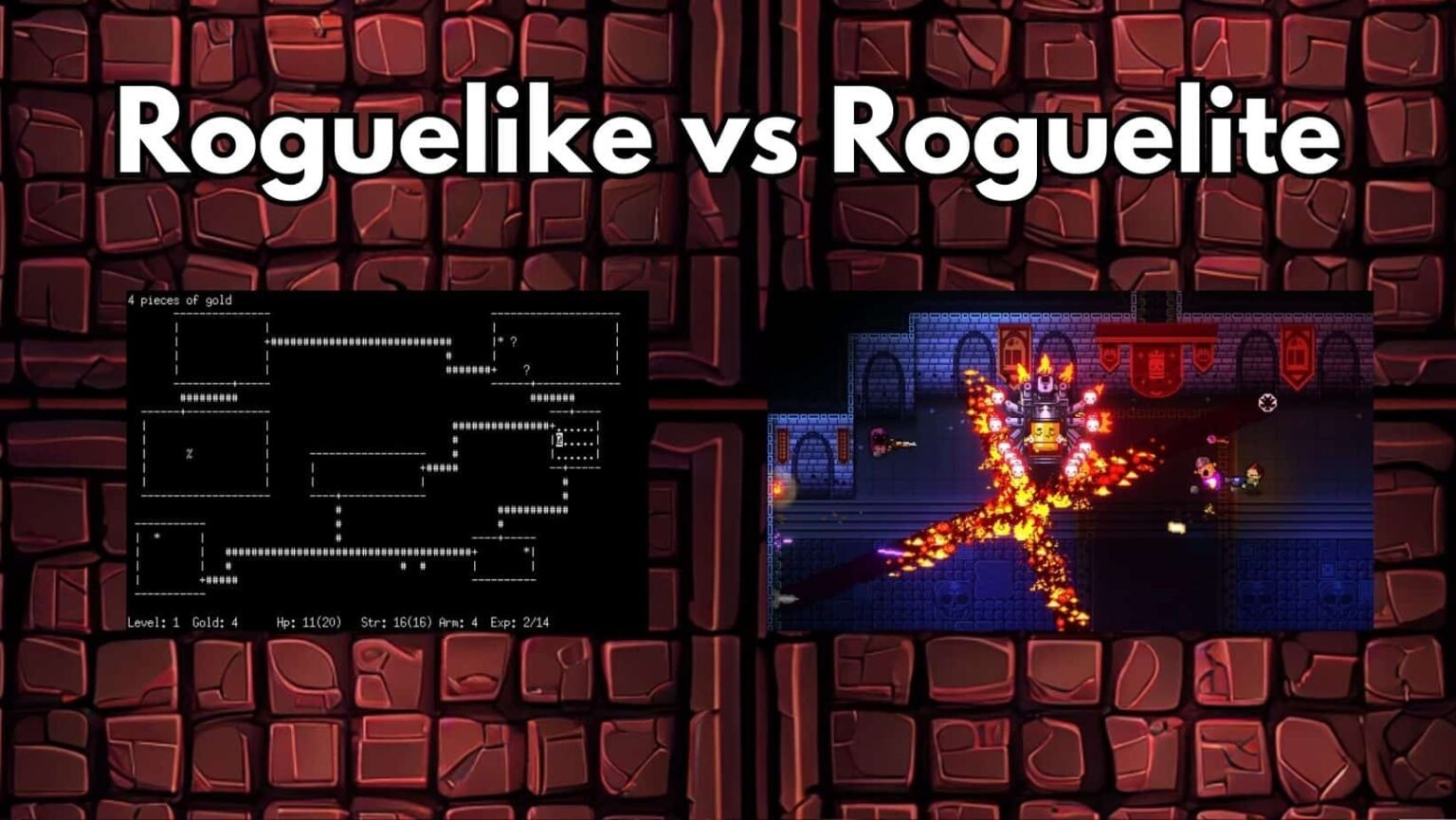When you hear the terms “roguelike” and “rogue-lite,” you might wonder what the difference is. Both genres have gained popularity in the gaming world, but they offer unique experiences. This article will explore the fascinating distinctions between roguelike and rogue-lite games, helping you understand what makes each genre special and why it has captivated so many players.
What Are Roguelike Games?
Roguelike games are characterized by their adherence to certain traditional gameplay mechanics. These games often involve dungeon crawling, turn-based movement, and permanent Death of the character. Let’s break down some of the key features of roguelikes:
- Procedural Generation: Levels are generated randomly each time you play, providing a fresh experience with every run.
- Permadeath: When your character dies, it’s game over. You lose all your progress and have to start from scratch.
- Turn-Based Gameplay: Players take turns making moves, allowing for strategic planning.
- Complexity: Roguelikes often feature intricate systems and mechanics that encourage exploration and experimentation.
Classic examples of roguelike games include Rogue (the game that started it all), NetHack, and Dungeon Crawl Stone Soup. These games prioritize a challenging experience, pushing players to learn from their failures and improve with each playthrough.
What Are Roguelite Games?
In contrast, roguelike games take the essence of roguelikes and modify some key elements to make the gameplay more accessible and forgiving. Here are the defining features of roguelikes:
- Persistent Upgrades: Players often earn upgrades or currency that can be used across different playthroughs, making progress feel more rewarding.
- Less Punishing Death: While Death still exists, it may not mean losing everything. Players might keep certain resources or experience points, allowing for continued advancement.
- Real-Time Gameplay: Many roguelites use real-time mechanics instead of turn-based systems, leading to faster-paced gameplay.
- Variety of Styles: Roguelites can incorporate a range of genres, from platformers to shooters, broadening their appeal.
Notable examples of roguelite games include Dead Cells, Hades, and Rogue Legacy. These games maintain a sense of challenge but offer players the chance to carry some of their progress forward, making them less daunting.
Key Differences Between Roguelike and Roguelite
Now that we’ve outlined the basic characteristics of both genres let’s compare them side by side to highlight the main differences:
FeatureRoguelikeRoguelite
Death Permanent death (permadeath) Death may lead to some progress
Game Structure Strictly turn-based Often real-time gameplay
Progression No persistent upgrades Persistent upgrades available
Complexity Often more complex systems Usually simpler mechanics
Genre Flexibility Tends to be dungeon-crawling Can include various genres
Understanding these differences is crucial for choosing the right game to match your preferences. Whether you prefer the hardcore challenge of a roguelike or the more forgiving nature of a roguelike, there’s something for everyone.
The Evolution of Roguelike and Roguelite
The history of roguelike vs roguelite is rooted in the early days of gaming. The term “roguelike” originated from the game Rogue, released in 1980. This game’s combination of permadeath, procedural generation, and turn-based mechanics set the foundation for the genre. Over the years, many developers adopted these concepts, leading to a wide variety of roguelike games.
With the rise of indie gaming in the 2010s, roguelikes emerged as a response to the difficulty of traditional roguelikes. Developers sought to attract a broader audience by making games that retained the core appeal of roguelikes while also incorporating elements that eased the learning curve. This evolution reflects a shift in gaming culture, where accessibility and innovation often go hand in hand.
Popular Roguelike and Roguelite Games
To further illustrate the differences between roguelike and rogue-lite, let’s take a look at some popular titles in each category:
Roguelike Games
- NetHack: A classic dungeon crawler where players explore dungeons filled with monsters and treasures. Every playthrough is different, and permadeath adds to the challenge.
- Tangledeep: A modern take on the roguelike genre featuring charming pixel art and deep gameplay mechanics, including character customization.
- Cataclysm: Dark Days Ahead: A post-apocalyptic roguelike that combines survival elements with complex gameplay systems, providing a rich experience for dedicated players.
Roguelite Games
- Hades: A critically acclaimed game that combines roguelite mechanics with an engaging narrative and beautiful art style. Players progress through various levels while earning upgrades that carry over between runs.
- Slay the Spire: A deck-building roguelite where players create unique strategies as they climb a spire filled with enemies. Each run offers new cards and encounters.
- Enter the Gungeon: A fast-paced shooter that blends roguelike elements with bullet-hell gameplay. Players collect items and weapons to aid in their quest.
Both genres offer unique experiences, and the choice often comes down to personal preference.
The Appeal of Roguelike and Roguelite Games
What draws players to roguelike and roguelite games? Here are a few reasons why these genres have gained such a devoted following:
- Replayability: The procedural generation and permadeath mechanics ensure that no two runs are the same, encouraging players to come back for more.
- Challenge: The inherent difficulty of roguelikes and roguelikes provides a sense of accomplishment when players overcome obstacles and improve their skills.
- Exploration: Players are often incentivized to explore every corner of the game world, discovering secrets and unique items along the way.
- Community: Many players enjoy sharing their experiences and strategies with others, fostering a strong sense of community around both genres.
The combination of these elements creates a compelling experience that keeps players engaged for hours on end.
Choosing Between Roguelike and Roguelite
When it comes to selecting a game, the decision between roguelike vs rogue-lite can depend on various factors:
- Experience Level: If you’re new to gaming or prefer a less punishing experience, a rogue-lite may be a better choice.
- Gameplay Preferences: Consider whether you enjoy turn-based mechanics or prefer real-time action.
- Time Commitment: Roguelikes can require more time investment to learn and master, while Roguelikes often allow for shorter play sessions.
Ultimately, both genres offer exciting experiences that cater to different tastes. Whether you find joy in the challenge of roguelikes or the accessibility of roguelikes, there’s something for every type of gamer.
Conclusion: The Best of Both Worlds
In the debate of roguelike vs. roguelike, it’s clear that both genres hold a special place in the gaming community. Each offers unique challenges and gameplay experiences, catering to diverse audiences. While roguelikes may appeal to those seeking a hardcore challenge, they provide a more forgiving path, allowing players to progress and improve over time.





